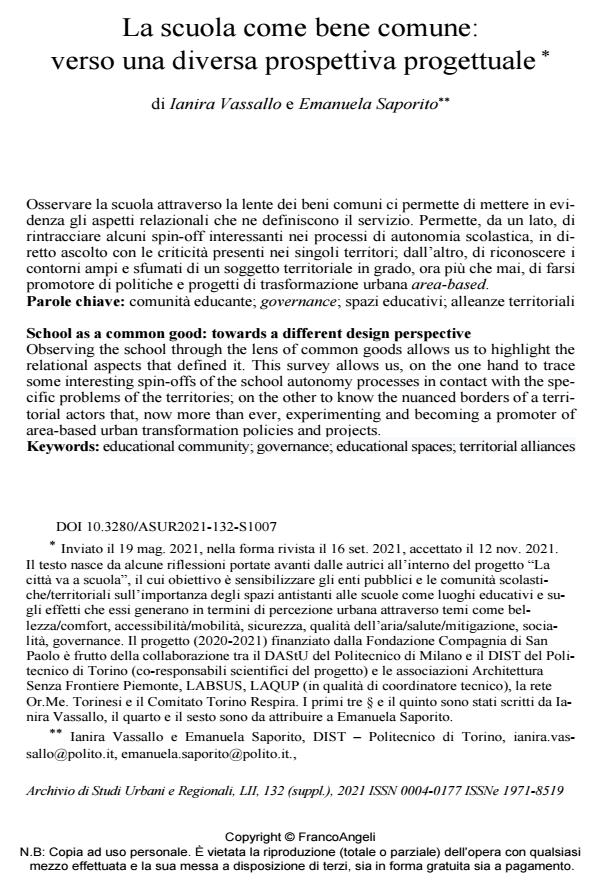School as a common good: towards a different design perspective
Journal title ARCHIVIO DI STUDI URBANI E REGIONALI
Author/s Ianira Vassallo, Emanuela Saporito
Publishing Year 2022 Issue 2021/132 Suppl.
Language Italian Pages 15 P. 110-124 File size 196 KB
DOI 10.3280/ASUR2021-132-S1007
DOI is like a bar code for intellectual property: to have more infomation
click here
Below, you can see the article first page
If you want to buy this article in PDF format, you can do it, following the instructions to buy download credits

FrancoAngeli is member of Publishers International Linking Association, Inc (PILA), a not-for-profit association which run the CrossRef service enabling links to and from online scholarly content.
Observing the school through the lens of common goods allows us to highlight the relational aspects that defined it. This survey allows us, on the one hand to trace some interesting spin-offs of the school autonomy processes in contact with the specific problems of the territories; on the other to know the nuanced borders of a territorial actors that, now more than ever, experimenting and becoming a promot-er of area-based urban transformation policies and projects.
Keywords: educational community; governance; educational spaces; territorial alliances
- From Social Infrastructure to Civic Center. The School as Laboratory of Collaborative Governance Models Daniela Ciaffi, Emanuela Saporito, Ianira Vassallo, in Cahiers de la recherche architecturale, urbaine et paysagère /2022
DOI: 10.4000/craup.11754 - Continuità e fratture. Identità, emergenza e visione di sviluppo nelle comunità educanti Francesca Storai, Paola Nencioni, Roberto Trolli, in IUL Research 4/2023 pp.70
DOI: 10.57568/iulresearch.v4i8.503
Ianira Vassallo, Emanuela Saporito, La scuola come bene comune: verso una diversa prospettiva progettuale in "ARCHIVIO DI STUDI URBANI E REGIONALI" 132 Suppl./2021, pp 110-124, DOI: 10.3280/ASUR2021-132-S1007